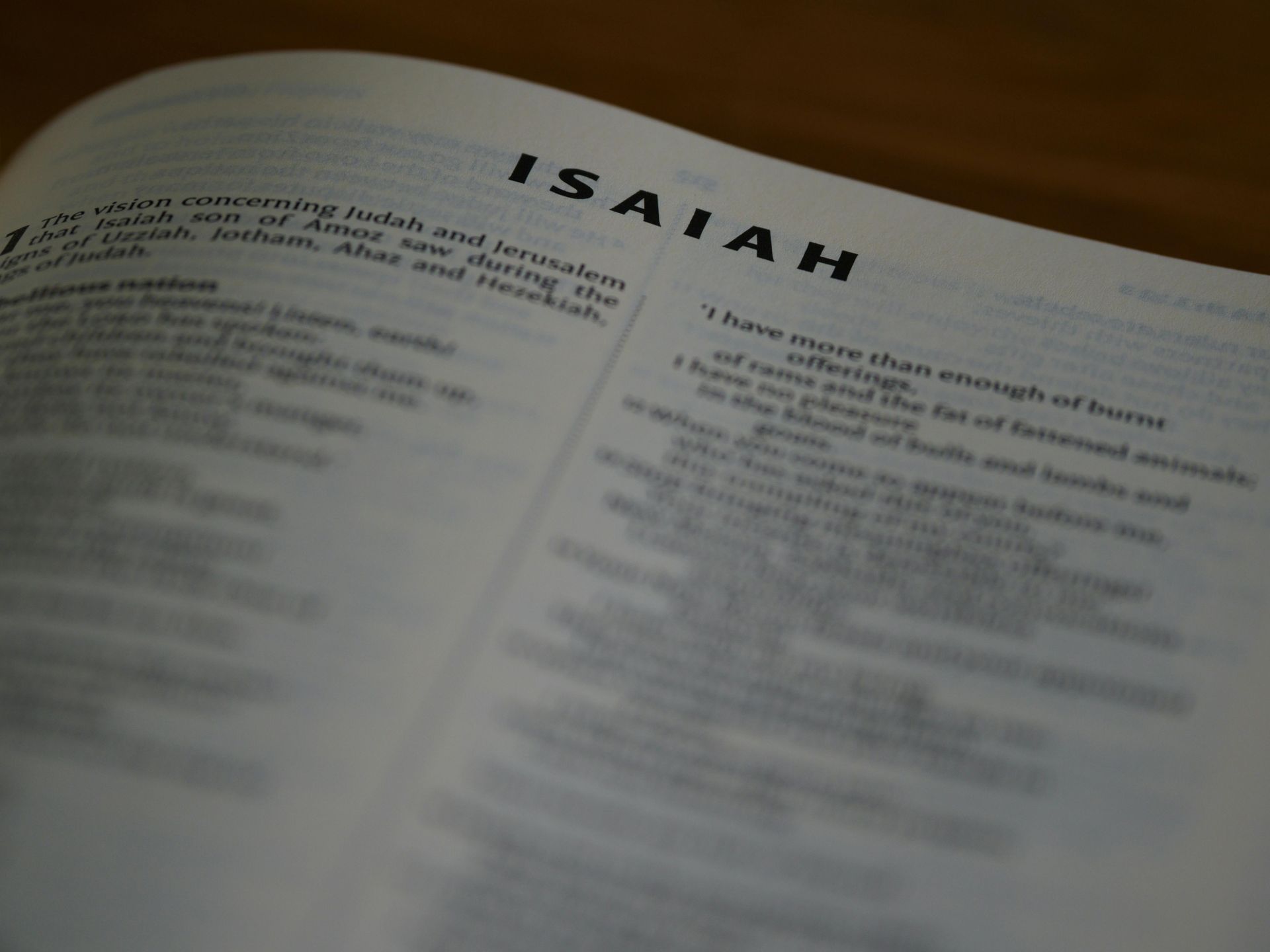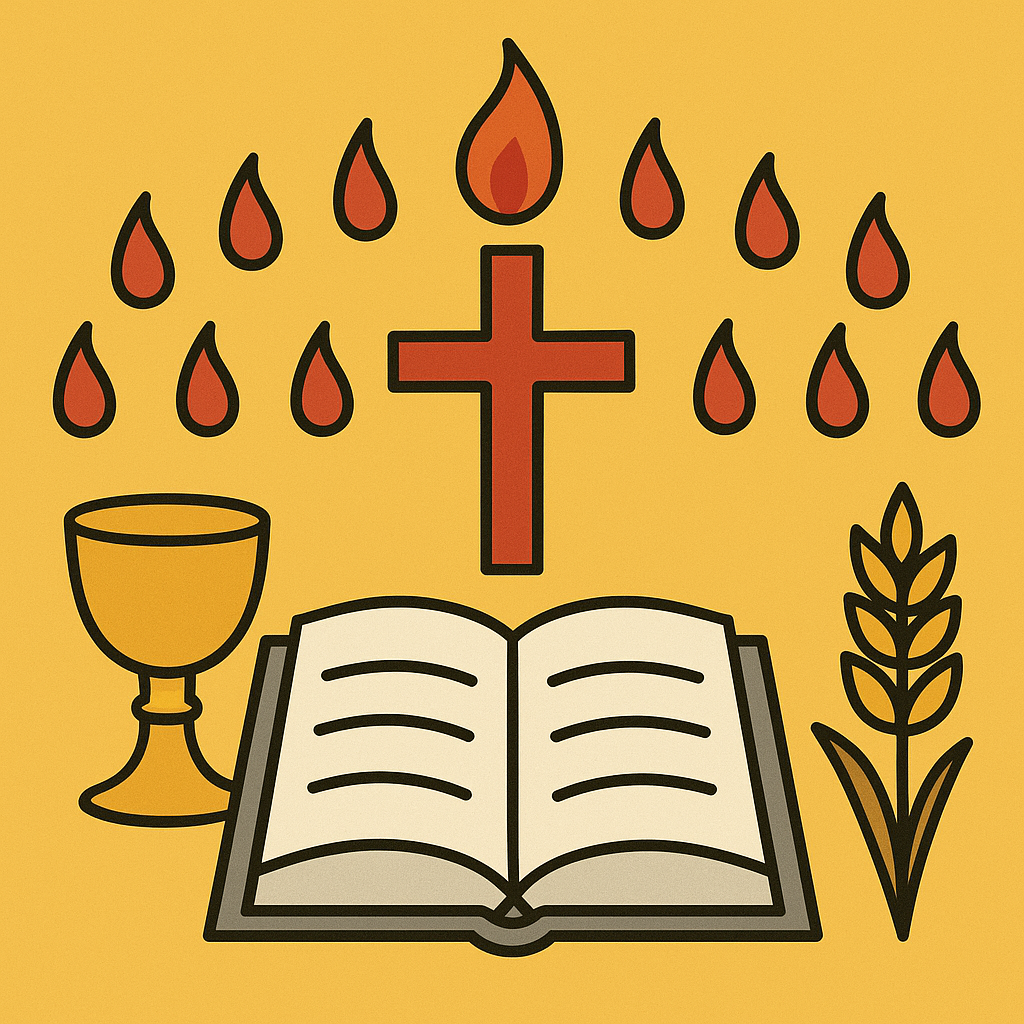Ezra 6 - 10
Ezra Comes to Jerusalem and Teaches the People
Ezra Chapter 6:
Chapter 6 explains how King Darius found the initial decree written by King Cyrus which authorized the rebuilding of the temple. He then authorized the resumption of the building of the Temple saying, (verse 7), “Do not interfere with the work on this temple of God.” Not only was the reconstruction to be resumed, but “the expenses of these men are to be fully paid out of the royal treasury” (verse 8).
Verse 14, “So the elders of the Jews continued to build and prosper under the preaching of Haggai the prophet and Zechariah.”
They finished the temple, and everyone celebrated the dedication of this house of God
(verse 17) followed by the celebration of the Passover
(verse 19).
Ezra Chapter 7
Guess who is introduced in chapter seven! It’s Ezra, the man the book is named after. Well, it’s about time. So, who was this man called Ezra? He was a priest and a scribe. Verse 6, “Ezra was a teacher well versed in the Law of Moses. . . Devoted himself to the study and observance of the Law of the Lord, and to teaching its decrees and laws in Israel” (verse 10).
Ezra’s goal is not to rebuild the temple or the wall around Jerusalem. Those tasks were led by Joshua, Zerubbabel, and Nehemiah. Ezra’s mission was, in a sense, to rebuild or reeducate the people. And who better to do this task than a scribe, a well-educated teacher.
We know what a priest was, but what is a scribe? The Hebrew word comes from a root that means “to count” and can mean a “recorder” or “to write.” Scribes were on the staff of government departments and larger businesses. The most prestigious position would be a “royal scribe.”
What would a scribe do? As you might imagine, back then, there wasn’t much reading material. There weren’t any books as we know them today nor electronic readers. No billboards, road signs, newspapers, or magazines to read. Most people probably didn’t know how to read. But there was a need to write official documents for the government, maintain temple tithe records, businesses correspondences and real estate documents. The scribes were the well-educated people who could read and write. The highest scribal post was that of royal scribe. In this role he might have been an advisor to the King or in charge of financial affairs, or an auditor overseeing the collection of taxes. Jeremiah had a scribe by the name of Baruch, son of Neriah. In the Persian Empire each governor was assisted by his own scribe
(Ezra 4:8, 9, 17, 23). Scribes were scholars who acted as secretaries. They were addressed as “rabbi” in the New Testament. So, Ezra was an important person in the Persian culture and highly respected. Perhaps, not the easiest person to live or work with.
I imagine that the better scribes had to be analytical personality types. These people love numbers, precision, and are perfectionists. It was expensive and time consuming to make a copy of a document. Here are some of the rules that the scribes had to follow when making a copy of the Scriptures on animal skins:
Each column of writing could have no less than forty-eight and no more than sixty lines.
The ink was made using a special recipe and had to be black.
The scribe had to say each word aloud as they were writing it. I imagine this helped them to stay focused. No televisions, radios, smartphones, or crying babies were allowed in his workspace.
If there were any errors on three pages, then entire document had to be discarded.
The letters, words and paragraphs had to be counted. The middle paragraph, word and letter must correspond to those of the original document.
This process helped ensure the accuracy of the copies. This was demonstrated when the Dead Sea Scrolls were discovered in 1948. These were 900 years older than the next oldest copies and proved to be accurate and consistent with one another.
Ezra received a letter from King Artaxerxes to take charge of the ecclesiastical and civil affairs of the Jewish nation. The letter begins, verse 13, “Now I decree that any of the Israelites in my kingdom. . . who wish to go to Jerusalem with you, may go.” About 1500 people were in this convoy. As we will see in the Book of Esther, more of them should have gone. Isaiah said as much in his prophecy, Isa. 48:18-20, “If only you had paid attention to my commands, your peace would have been like a river, your well-being like the waves of the sea. Your descendants would have been like the sand. . . Leave Babylon, flee from the Babylonians!”
Verse 14, “You are sent by the king and his seven advisers to inquire about Judah and Jerusalem with regard to the Law of your God, which is in your hand.” The bottom line was, he was to set up a theocratic state, much like what was intended when the Israelites entered the country the first time under the leadership of Joshua. Do you think that these Israelites will do much better than their ancestors?
You will notice that the people of God are referred to as “the Israelites” though those who were taken into captivity were of the southern tribe of Judah. The Israelites (the northern kingdom) which was invaded by the Assyrians, had only some of their people taken into captivity in 721 B.C. Many of them headed south to Judah (2 Chron. 34:6-9). Because the population of the two nations became mixed, the distinction between Israel and Judah had disappeared. Today, as in the Book of Acts, the terms Judea and Israel are used interchangeably.
In the king’s letter authorizing his return, along with gold and silver that was collected, he prohibited the imposition of taxes, tribute, or duty on any of the priests, Levites, singers, gatekeepers, temple servants or other workers at this house of God” (verse 24). So all those engaged in the work of God were given tax-exempt status. Ezra was also to teach the “Laws of God to those who don’t know them” (verse 25). Did Ezra give them a pre-test first? If they passed the test, would they get a certificate of some sort showing that they were exempt from attending classes? I attended a seminary where they gave incoming student a test on a Survey of the Bible and if you passed it you could move onto more advanced courses.
Because of his education, devotion to the law, and his mandate to teach his people the Law of Moses, Jewish tradition often regards Ezra as “the second Moses.” That’s quite a title. That’s better than being called the “second Haman” or the “second Judas.”
Ezra Chapter 9
In Chapter 9 Ezra discovered that Jewish men had been marrying non-Jewish women. Verse 2, “They have taken some of their daughters as wives for themselves and their sons and have mingled the holy race with the peoples around them. And the leaders and officials have led the way in this unfaithfulness.”
Ezra was appalled by what he saw. He tore his garments in despair and confessed the sins of Israel before God, then braved the opposition of some of his own countrymen to purify the community by enforcing the dissolution of the sinful marriages.
Why did the Israelites intermarry with neighboring people? Perhaps because so few Israelite women in Persia wanted to return to Jerusalem. In verse 11 the women that the Israelite men married are called “foreign women,” suggesting that they were not only of a different ethnic group, but adhered to a foreign religion, which was prohibited by Mosaic Law.
These marriages with women of other nations were forbidden in the Law of Moses (Deut. 7:3–4) because it would lead to apostasy (Ex. 34:10-16). Just ask Solomon. Idolatry was one of the sins that had resulted in Judah being conquered by Babylon and taken into captivity. Now, upon their return to the Promised Land, Judah was again toying with the same sin. Ezra’s heart was grieved. He really freaked out when he saw what they had done. He tore his tunic and cloak, pulled hair from his head and beard, “and sat down appalled” (Ezra 9:3).
The issue was not race nor ethnicity, but religion.
Ezra 9:14, “Shall we then break your commands again and intermarry with the peoples who commit such detestable practices? Would you not be angry enough with us to destroy us, leaving us no remnant or survivor?” The detestable practices included worship of idols which included, in the worship of Molech, child sacrifices.
Ezra Chapter 10
In Ezra 10:2–3, as Ezra was praying, a large group of Israelites came to him in repentance. They, the people, made a proposal to rectify the situation: “We have been unfaithful to our God by marrying foreign women from the peoples around us. But in spite of this, there is still hope for Israel. Now let us make a covenant before our God to send away all these women and their children, in accordance with the counsel of my lord and of those who fear the commands of our God. Let it be done according to the Law” (verses 3-17). The purpose of this covenant would be to once again set apart the Jewish people as fully devoted to the Lord and remove all connections with those who worshiped other gods. The agreement required the men of Judah to divorce their pagan wives.
Ezra agreed that this covenant was the proper course of action. He commanded, “You have been unfaithful; you have married foreign women, adding to Israel’s guilt. Now honor the Lord, the God of your ancestors, and do his will. Separate yourselves from the peoples around you and from your foreign wives” (Ezra 10:10–11).
We know that God hates divorce (Mal. 2:16), and some have asked how this event is related to the issue of divorce in today’s society. A couple of relevant points can be considered. First, this event took place during a previous dispensation, in a time when God’s chosen people were to live according to the Law of Moses. The Law of Moses was part of the Old Covenant that expired at the coming of the Messiah. It was made between God and Israel, not God and the “church” (which didn’t exist then) or any other group of people.
Also, 1 Cor.7:15–16 gives the principle for today’s believers married to unbelievers. Paul wrote, “If the unbeliever leaves, let it be so. The brother or the sister is not bound in such circumstances; God has called us to live in peace. How do you know, wife, whether you will save your husband? Or, how do you know, husband, whether you will save your wife?” In other words, a believer is called to stay with an unbelieving spouse whenever possible. However, if the unbelieving spouse abandons the relationship, the believing spouse is not to dispute the matter.
Fortunately, only about 110 men were guilty of marrying pagan wives. Did some of the wives abandon their pagan religions to save their marriages? Did the men provide for their divorced wives? We don’t know. But one thing was for sure, the Israelites had to remove the pagan influences in their communities. And without these drastic measures, the Jewish community would likely have assimilated and adopted the lifestyles of their pagan neighbors. And given that the Jews were the only people who were monotheistic in their beliefs, that would have been the end of that, also.
The story continues in the Book of Nehemiah, which at one time was part of the Book of Ezra. There you will see both Ezra and Nehemiah teaching the Lar of Moses (The Torah) and rededicating themselves to the covenant they made with God. This resulted in the observance of the holy days such as the Festival of Booths (Sukkot) with fervor and piety not seen since the days of Joshua. They also embraced the complete observance of Shabbat, the Sabbath.
Although Ezra was a strong spiritual leader and experienced marked success in influencing the populace to strengthen their connection to God, his sincere devotion did not lead to an improved economic and military state. Over the next 12 years the situation worsened. The walls of Jerusalem were crumbling, and enemies routinely looted the area. A sense of resignation pervaded the people. They accepted the status quo, unwilling to work to change it. This brings us to the book of Nehemiah.
Recent Articles
Share this:
Start Here...
Why Study the Bible?
Don’t many consider the Bible to be just a book of myths? Why do we read the Bible rather than the sacred literature of other religions?
How do we know that it is from God? How do we know that what we have today is an accurate translation from the original? Is the Bible complete or have there been some books that have been lost?
We should be able to answer these questions, and there are answers! So start here!
Answers to Common Bible Questions





